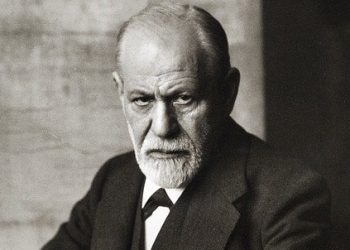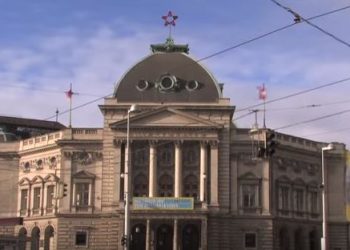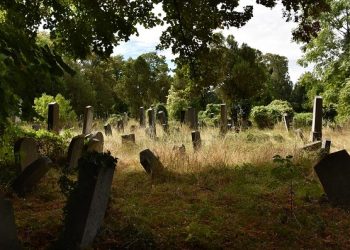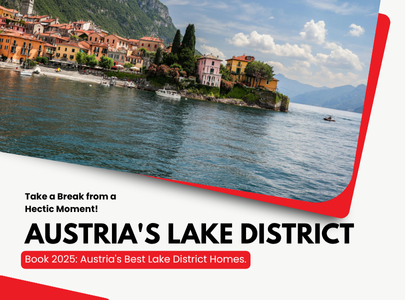The Story of the Theater
The Burgtheater, Austria’s National Theater, originally served as the court theater for the Habsburg family. The theater actually began operating in 1741, by order of Maria Theresa, who wanted a theater near her residence (the Hofburg Palace). The first theater building was right next to the palace, opposite St. Michael’s Church. The theater was the most important in the empire, and towards the end of the 18th century, it hosted several unique premieres: three of Mozart’s operas and the first symphony of Beethoven.
For about 130 years, the theater operated in the building next to the palace, but in 1888, after 14 years of construction, it moved to the new and familiar building on the Ringstrasse. This building was designed by Gottfried Semper and Karl Freiherr von Hasenauer.
In 1922, the theater was expanded with the addition of a building called the Akademietheater, located on Lisztstraße.
During World War II, under Nazi rule, the theater staged performances that continued to spread Nazi ideology and support Nazism. In the final days of the war, during a massive Allied bombing, the theater was severely damaged and a month later was hit again by a fire that broke out on the premises. After a year of renovations and restoration, the theater returned to its regular operations.
Today, there are two other theaters in nearby streets associated with the National Theater: the Vestibül and the Kasino am Schwarzenbergplatz. The theater employs about 530 people, and there are approximately 20 premieres each year.
This is what the National Theater of Austria looks like:
The Architecture and Design of the Theater Building
The theater was the last magnificent building to be constructed on the Ringstrasse, directly opposite the splendid City Hall. The exterior walls of the building are beautifully decorated with figures from the world of literature, as well as pairs of figures symbolizing humanity’s conflicting emotions: love and hate, humility and pride, and supreme heroism and selfishness. At the top of the building stands a statue of the god Apollo, with the muse Melpomene, symbolizing tragedy, to his right, and the muse Thalia, symbolizing laughter and comedy, to his left.
Inside the theater, there are several impressive wall and ceiling paintings. Of the ten remarkable paintings in the building, four were painted by the famous artist Gustav Klimt himself at the beginning of his career. He painted them with his brother Ernst and their friend Franz Matsch. Among Klimt’s works are ceiling paintings from 1887 for the grand staircase, reflecting the history of the theater. Klimt’s paintings in the theater are: The Cart of Thespis, Shakespeare’s Globe Theater, The Altar of Dionysus, and Theater in Taormina.
In addition, throughout the building, there is a variety of magnificent statues and paintings of famous artists, actors, and writers from the history of the theater.
The theater hall is impressive in its beauty, with a huge stage that is one of the largest in the world. The stage is 23 meters wide and about 30 meters long. Technologically, it is considered a very advanced theater, with scene changes completed within 40 seconds.
Guided Tours of the National Theater – Behind the Scenes
Due to its unique beauty, the theater serves as a visiting place for history and art lovers (about 13,000 visitors a year) and is considered one of Vienna’s most important attractions.
You can join a guided tour of the theater. The tour will give you an extraordinary glimpse into the world of Austrian theater and its glorious history. You can also admire the impressive paintings by Klimt and the variety of stunning statues and paintings by artists such as Nestroy, Raimund, Schnitzler, and more. The tours are conducted in German, but a written summary in English is available for tourists.
Tour Times:
- Monday, Tuesday, Friday: at 4:00 PM
- Sunday and holidays: at 11:00 AM
- The theater is closed on December 24th, Good Friday, and on days when there are morning performances.
Tour Cost:
- Adult: €10
- Student: €5
- Child: €5
- Senior: €9
Tickets can be purchased directly at the theater box office. There is no need to register in advance. Ticket sales begin about 15 minutes before the tour starts.
Private group tours (over 10 people) can be arranged. Please contact by email: <a href=”mailto:info@burgtheater.at” target=”_blank”>info@burgtheater.at</a>
Please note: The tours may not include the stage area if there are preparations for a performance. On days with morning or early afternoon performances, guided tours will not take place (it is advisable to check the official website listed below).
If you would like to admire the theater building without paying for a guided tour, you can enjoy a virtual tour as part of the Google Arts & Culture project.
Essential Information for Visiting the National Theater
Most of the performances at the theater are in German, but some also include English subtitles. If you want to purchase tickets for a show, please check the official website.
You can find information on current performances and purchase tickets on the official theater website: tickets.burgtheater.at
You can also purchase tickets at the theater box office at: Universitätsring 2, 1010 Wien
Box Office Hours:
- Monday – Friday: 10:00 AM to 6:00 PM
- Saturday, Sunday, and holidays: 9:00 AM to 1:00 PM (telephone service only)
- Additionally, the box office opens one hour before a performance begins.
The Official Website of the Theater
How to get to the National Theater?
Address: Universitätsring 2, 1010 Vienna
The theater is located right on the Ringstrasse, opposite the large square of the City Hall.
You can take tram lines 1, 71, or D and get off at the Rathausplatz/Burgtheater stop.
Alternatively, you can take the purple U2 underground line and get off at the Schottentor station. After exiting the station, you will first see the University of Vienna building (worth a visit), and then you will need to walk for about 7 minutes along the Ringstrasse until you reach the theater.
Another option is to take the purple U2 underground line and get off at the Rathaus station. From there, you will need to walk towards the City Hall and cross the large square in front of it. The theater is at the end of the square.
Map:
After visiting the theater, you can continue along the Ringstrasse and admire other buildings along it, such as the Austrian Parliament Building and the State Opera.


















